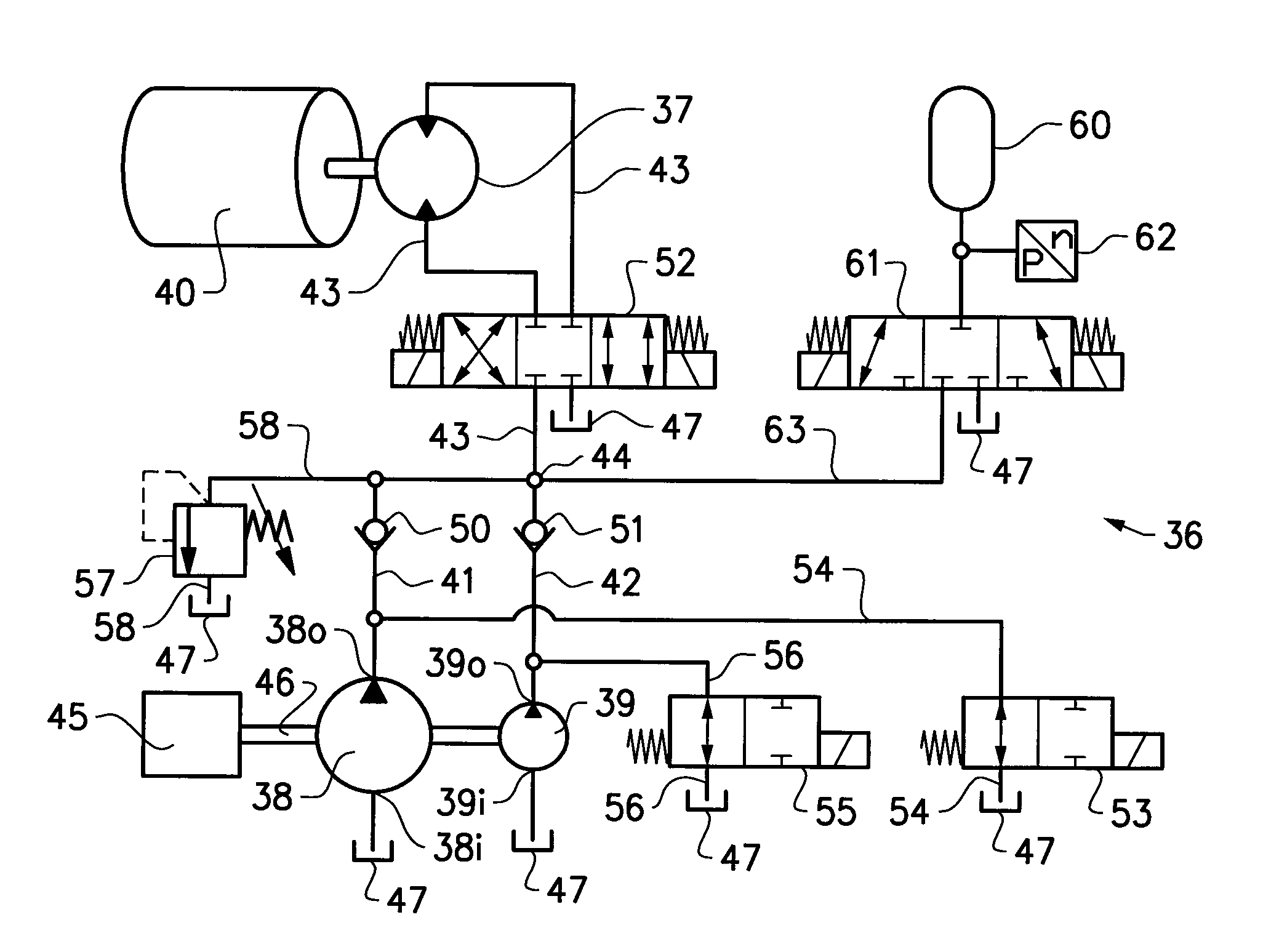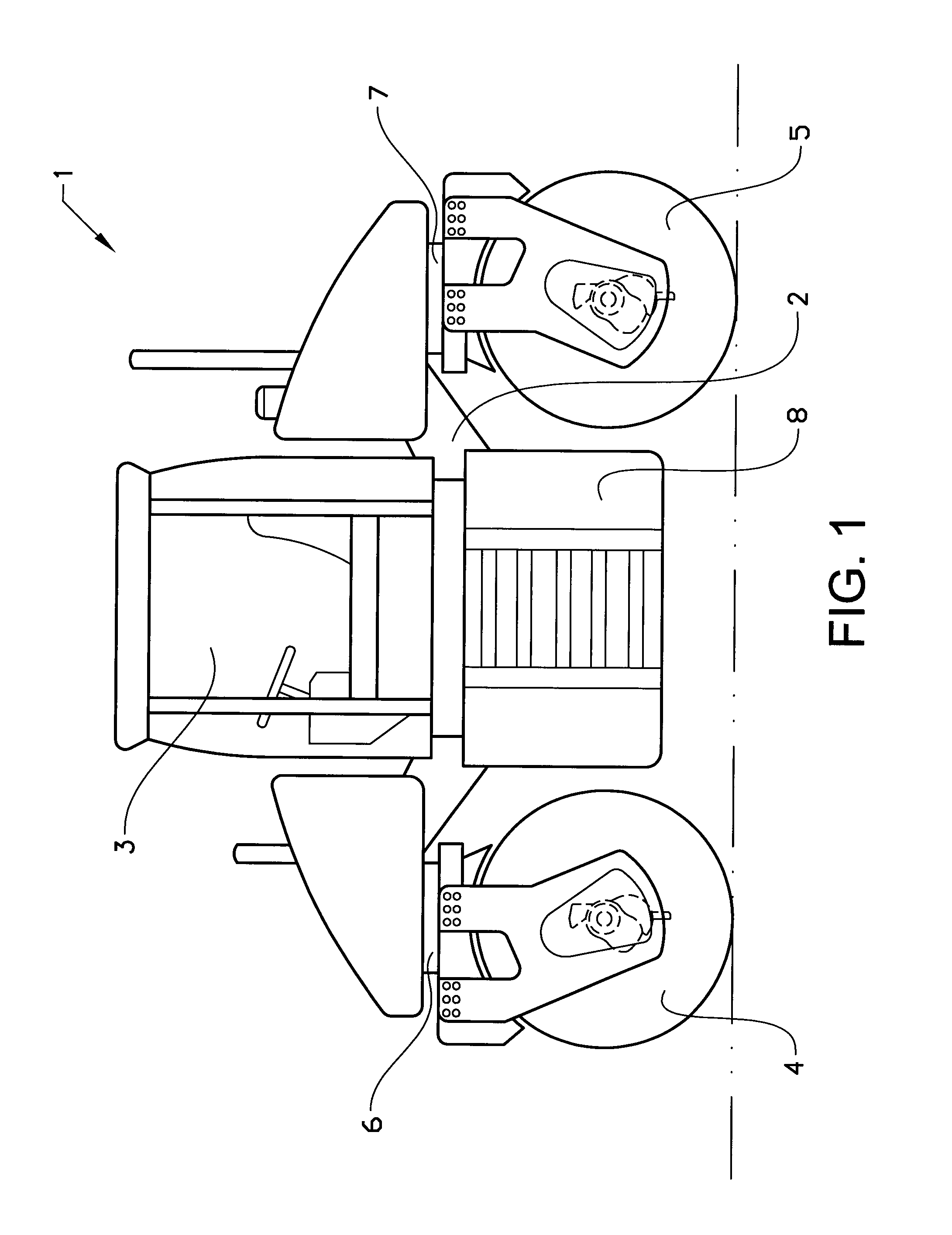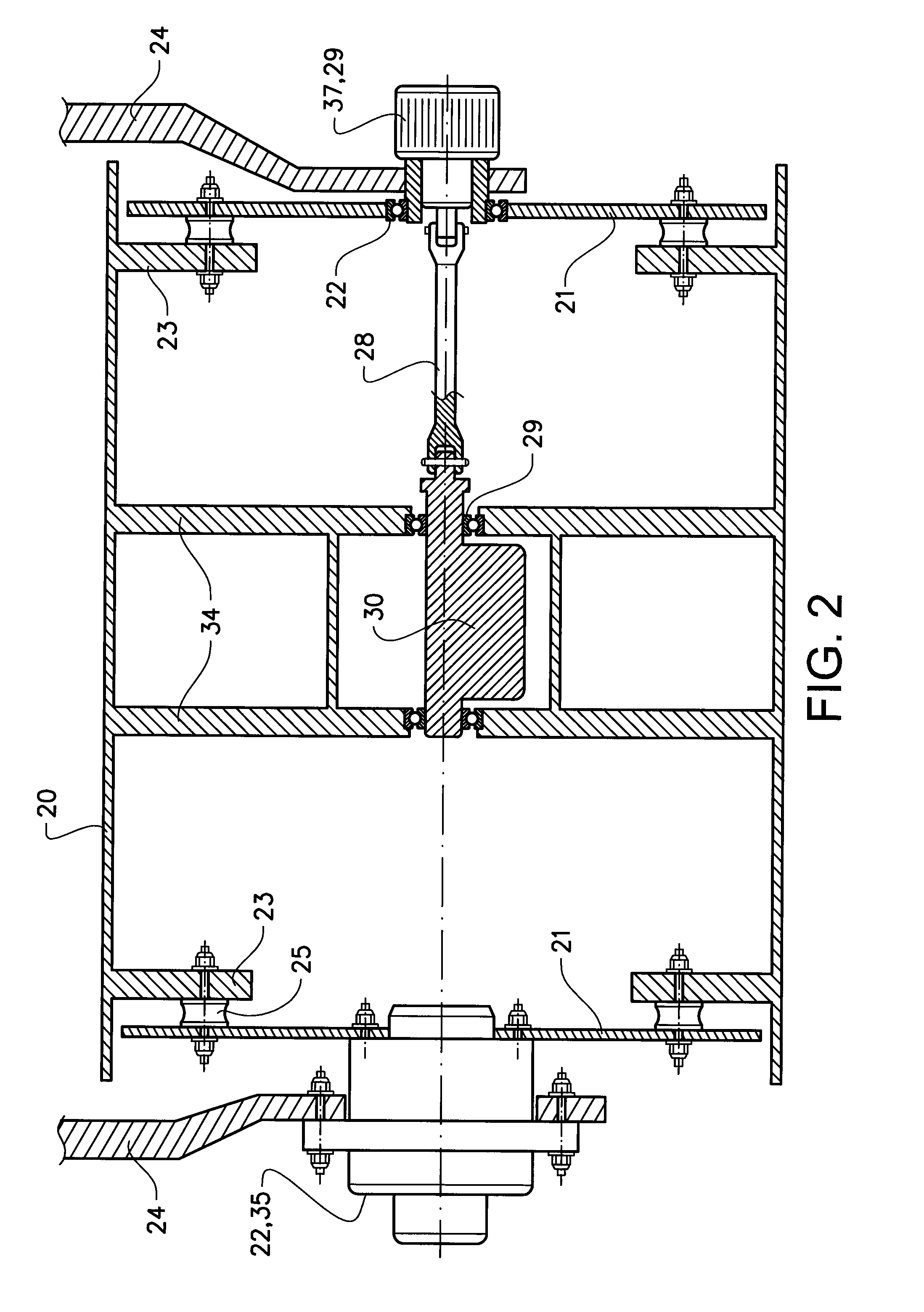Hydraulic system for driving a vibratory mechanism
a technology of hydraulic system and vibratory mechanism, which is applied in the direction of accumulator installation, servomotor, way, etc., can solve the problems of large amount of energy lost in throttling, large amount of required torque output of engine shaft, and large amount of required fluid flow, etc., to achieve high flow volume, reduce excessive and potentially damaging pressure build-up, and reduce the effect of power consumption
- Summary
- Abstract
- Description
- Claims
- Application Information
AI Technical Summary
Benefits of technology
Problems solved by technology
Method used
Image
Examples
first embodiment
[0039]FIG. 3 shows very schematically the hydraulic system 36 for driving a vibratory mechanism 40 of the compaction roller according to the disclosure. The vibratory mechanism 40 typically comprises at least one eccentric 30 and optionally also driving shaft 28. The hydraulic system 36 comprising a hydraulic motor 37 connected to vibratory mechanism 40. The hydraulic, system 36 further comprises a first and a second hydraulic pump 38, 39 fluidly connected to the at least one hydraulic motor 37 and arranged for supplying pressurised hydraulic fluid to the hydraulic motor 37 via fluid feed paths 4142, 43. The first and second hydraulic pumps 38, 39 are fluidly connected to the hydraulic motor 37 partly via first and second individual feed paths 4142, and partly via a common feed path 43. The first and second individual feed paths 4142 meet and merge to the common feed path 43 at a coupling point 44.
[0040]A single power source 45, such as a combustion engine or electrical motor is rot...
second embodiment
[0049]FIG. 6 shows the hydraulic system 36, which additionally comprises a hydraulic accumulator 60 fluidly connected to the outlet ports 38o, 39o of the first and second pumps 38, 39, as well as the hydraulic motor 37. The accumulator 60 is connected to the common feed path 43. The accumulator 60 is fluidly connected and charged by the hydraulic motor 37 via an accumulator control valve 61 during an eccentric deceleration phase. A pressure switch or pressure sensor 62 may be provided in the feed path 63 for the purpose of detecting the accumulator charge status. In the next acceleration phase the accumulator is fluidly connected to hydraulic motor 37 and discharged during the acceleration phase. Only the energy loss associated with charging and discharging the accumulator must be supplementary supplied from a hydraulic pump for accelerating the eccentric 30 back to nominal speed. Since the energy loss associated with charging and discharging the accumulator normally is relatively s...
third embodiment
[0052]With reference to FIG. 7 which shows the hydraulic system 36, variation in eccentric operating frequency can alternatively be arranged by providing one 39 of the first and second hydraulic, pumps 38, 39 is a variable displacement pump and the other 38 of the first and second hydraulic pumps 38, 39 is a fixed displacement pump. Preferably, the smaller displacement pump 39 is the variable displacement pump because of the lower costs of a small variable displacement pump compared with a large variable displacement pump. The variable displacement pump 39 is preferably a continuously variable displacement pump that is capable of providing any flow level between a min and max flow level. Consequently, the range of possible eccentric, frequency is significantly increased compared with the solution having two fixed displacement pumps as shown in FIG. 6.
[0053]For each of the embodiments 1-3 described above both the first and second feed paths 4142 are free from any additional hydraulic...
PUM
 Login to View More
Login to View More Abstract
Description
Claims
Application Information
 Login to View More
Login to View More - R&D
- Intellectual Property
- Life Sciences
- Materials
- Tech Scout
- Unparalleled Data Quality
- Higher Quality Content
- 60% Fewer Hallucinations
Browse by: Latest US Patents, China's latest patents, Technical Efficacy Thesaurus, Application Domain, Technology Topic, Popular Technical Reports.
© 2025 PatSnap. All rights reserved.Legal|Privacy policy|Modern Slavery Act Transparency Statement|Sitemap|About US| Contact US: help@patsnap.com



